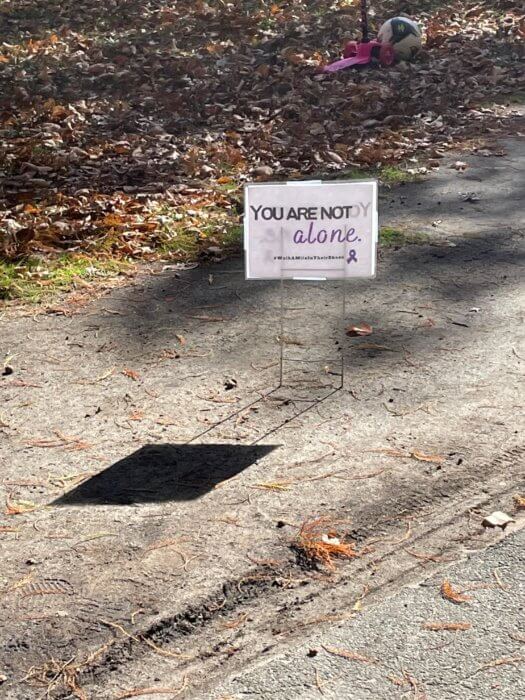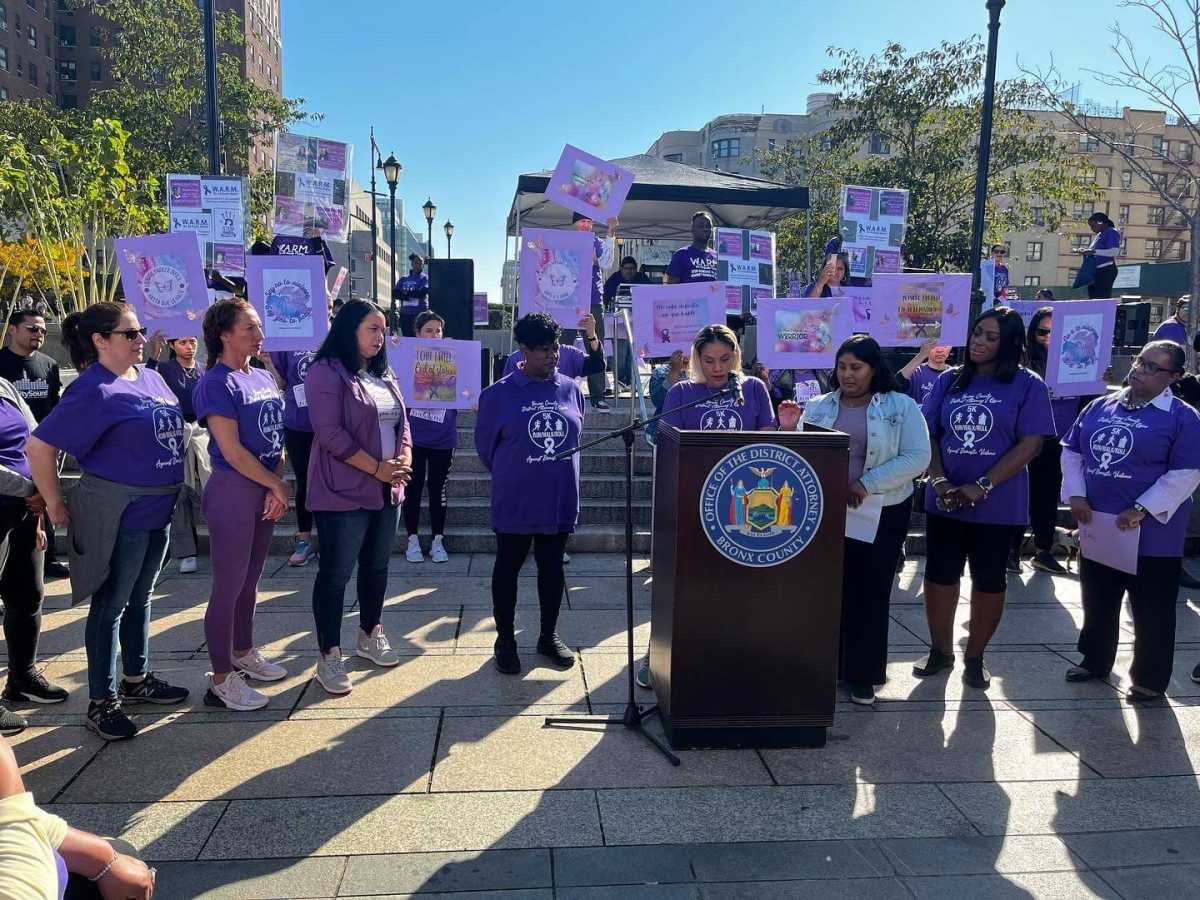Arianna Reyes-Gomez, Gabrielle Muniz and her 6-year-old daughter Rozara Estevez, and 20-year-old Azsia Johnson, a single mom of two, are just some of the women and children — victims of domestic violence in New York City this year — at the forefront of Bronx Borough President Vanessa Gibson’s mind as her administration tries to reduce the Bronx’s climbing rates of domestic violence and gender-based violence.
Two of those cases — Gomez, an NYPD Transit officer who was stabbed in her Melrose apartment by her estranged husband, and Muniz and her daughter, stabbed by Muniz’s boyfriend — happened in the borough, shaking communities where the cycle of domestic violence leads to tragedy.
The Bronx has the highest number of domestic violence cases and deaths in New York City, and more than 9,500 domestic violence incidents have occurred in the Bronx in 2021, according to the Bronx District Attorney’s Office.
According to a 2021 NYPD Domestic Violence Report, from 2015 to 2020, eight out of the top 15 community boards with the highest rates of intimate partner homicides citywide, were from the Bronx. Data from Bronx community boards 3 and 6 show 17 intimate partner homicides over that period, in neighborhoods that include Claremont, Crotona Park, Melrose, Morrisania, Bathgate and Belmont.
For elected officials and those offering services for survivors of domestic violence, the fear is that number of people experiencing domestic violence or intimate partner harm is higher due to underreporting. The issue of rising domestic violence in the borough also escalated during the pandemic.

“Prior to COVID-19, (the Bronx) did have high and alarming rates of domestic violence homicides, and certainly during the pandemic I realized that many victims were forced to live with their abusers and their partners because there were there really was nowhere to go,” Bronx Borough President Vanessa Gibson told the Bronx Times. “Shelters were still overwhelmed and a lot of victims just did not want to disrupt their family life right in the middle of a global pandemic. So now post-pandemic era, we’ve been working really closely with a lot of the trusted partners and credible messages on the ground.”
The volume of domestic violence calls in NYC are staggering, as 2021 city data shows that there were 260,084 domestic violence incident reports filed by the NYPD, which comes out to an average of 700 calls a day. In the same year, the city’s 24-hour Domestic Violence hotline received 93,735 calls and nearly 7,000 unique shelter requests were recorded.
Also, NYC’s women of color are disproportionately overrepresented in domestic violence incidences.
Black females account for nearly 30% of intimate partner homicides in NYC despite making up just 13% of the city’s population; Hispanic females accounted for 25.1% of intimate partner homicides, while only accounting for 14.6% of the city population.
The number of reported domestic violence incidents in 2021 was up by nearly 30,000 compared to 2020.
Last month, Gibson, who took office in 2022, announced the relaunching of the borough’s Domestic Violence Advisory Council and the goal is simple: increase the number of families served, increase advocacy, and increase coordination among service providers to better service high-risk communities.
The Bronx Times reached out to the borough president’s office about why the advisory council was disbanded and is awaiting a response.
Gibson’s office was awarded a $1 million grant that she says, in conjunction with the Bronx District Attorney’s Office, will provide affected families with services and resources over the next three years. October, which is Domestic Violence Awareness month, included boroughwide events such as 5K Run/Walk/Roll, which was attended by 350 people.
“I was so uplifted by the stories of those survivors – you saw the tears coming from my eyes. How could you not feel the emotion of what these women went through?” said Bronx DA Darcel Clark.

Reducing systemic harm in the borough is not just an undertaking for the Bronx electeds. Amongst a sea of purple-clad runners and walkers at the 5K race, survivors, advocates and those who have lost loved ones to domestic violence are figuring out how they can make inroads toward reducing violence in Bronx homes.
“I was lucky. I escaped, but I know it’s not like that for most survivors,” said Joanny Feliz, 23, who was in an abusive and controlling relationship for five years. “I have friends who live near me that don’t have a way out (from their abusers). I want to know what I can do to help her, and help anyone dealing with this.”
Community groups like Kingsbridge Heights Community Center (KHCC), which deals with both intimate harm prevention and trauma care for survivors of domestic violence, are actively engaging the neighborhood about the ways in which domestic violence permeates.
On the prevention side of things, Nicole Maiorano who works in KHCC’s Changing Futures Program, which provides services and support to adults and families that are victims of abuse, neglect and trauma, has made a concerted effort to open dialogue about domestic violence and harm at-large with younger audiences.
According to a U.S. Centers for Disease Control and Prevention report, one or more episodes of violence with an intimate partner or family member may increase a young adult’s risk of having a heart attack, stroke or heart failure hospitalization later in life.
In that same report researchers found that people who reported having had at least one exposure to domestic violence in the past year at the beginning of the study also had higher rates of self-reported alcohol use, smoking and depression.
“If the first time we’re having this conversation with somebody is when they’re 18 and away from home for the first time, I think it’s too late,” said Maiorano.”We think about how kids grow up and get married, but our teenagers are in relationships already and some may be experiencing unhealthy relationships. So making sure that the teenagers have a space to talk about it, to understand it, and to to process it is really important.”
A report by the Urban Resource Institute (URI) revealed that economic abuse occurs in 98% of domestic violence cases, and survivors of domestic violence often are driven into poverty after leaving unsafe relationships, become homeless after leaving abusive partners, and have limited access to public assistance and other government resources.
“Our notions of safety must evolve so that when we think of safety for survivors of domestic violence, we also consider financial safety,” said Teal Inzunza, program director of the URI Economic Empowerment Program and one of the report’s co-authors. “You cannot have physical safety and a stable future without financial security and independence. Many survivors cite high debt loads, lack of access to safe housing, and scarce financial resources, including public benefits, as major obstacles to leaving their abusers. Breaking financial barriers to safety and healing will support survivors seeking safety, whatever that means to them, and begin the journey to build a stable future for themselves and their families.”
KHCC’s Changing Future’s Program says it’s helped 300 Bronx children and families annually, and in an effort to reduce barriers for survivors and those experiencing violence, it’s the only program in the Bronx to offer completely free long-term treatment services while asking no questions about immigration status.
To contact the NYS Domestic and Sexual Violence Hotline call (800) 942-6906 or text (844) 997-2121. All conversations are confidential, secure and available 24/7 in most languages.
Reach Robbie Sequeira at rsequeira@schnepsmedia.com or (718) 260-4599. For more coverage, follow us on Twitter, Facebook and Instagram @bronxtimes.




















